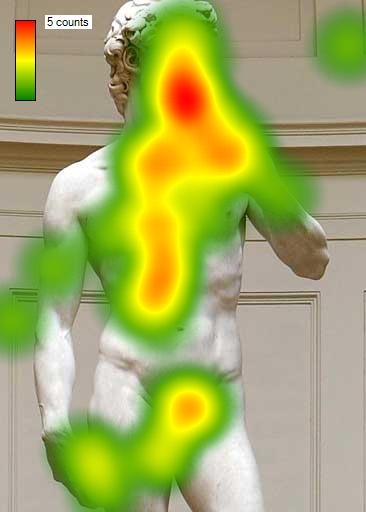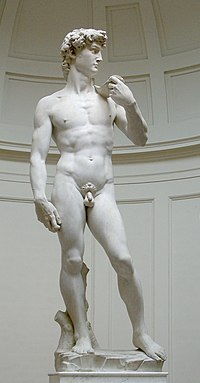Eye Tracking and Inverse Process
如果在Google上搜一下"eye tracking", 会得到非常多的结果. 选两个如下:
http://en.wikipedia.org/wiki/Eye_tracking
Eye tracking is the process of measuring either the point of gaze ("where we are looking") or the motion of an eye relative to the head. An eye tracker is a device for measuring eye positions and eye movement. Eye trackers are used in research on the visual system, in psychology, in cognitive linguistics and in product design. There are a number of methods for measuring eye movement. The most popular variant uses video images from which the eye position is extracted. Other methods use search coils or are based on the electrooculogram.
我在 Jan 10, 2012 的那篇博文 "差点撞车 A Collision Set-up" http://www.blogger.com/blogger.g?blogID=11805678#editor/target=post;postID=5874406502671032586 中提到的“眼珠移动技术” 就是以eye tracker 的技术为基础发展出来的.
请看下面这张图
 As you can see above, people almost always focus in on faces, breasts and genital areas. This is common knowledge and often exploited by advertisers, but what’s interesting is that it seems to have nothing to do with sexual orientation – in our little test, even the straightest male participant couldn’t help but cop a quick look at David’s manhood. http://www.90percentofeverything.com/2009/08/25/some-fun-eye-tracking-heatmaps/
As you can see above, people almost always focus in on faces, breasts and genital areas. This is common knowledge and often exploited by advertisers, but what’s interesting is that it seems to have nothing to do with sexual orientation – in our little test, even the straightest male participant couldn’t help but cop a quick look at David’s manhood. http://www.90percentofeverything.com/2009/08/25/some-fun-eye-tracking-heatmaps/
这是米开朗基罗的有名的大理石雕塑大卫(http://en.wikipedia.org/wiki/David_(Michelangelo)). 原图是

观众面对这张照片时最多看的是身体的那些部位? 用"eye tracking"技术研究, 可以得出结论: "people almost always focus in on faces, breasts and genital areas", 脸部, 胸部, 生殖器. 男女观众都是这样.
把上述的测量过程 (测出你的眼睛注视的地方) 反过来, 变成一个控制过程: 让你的眼睛移向我指点的地方. 就是我说的“眼珠移动技术”.
http://en.wikipedia.org/wiki/Eye_tracking
Eye tracking is the process of measuring either the point of gaze ("where we are looking") or the motion of an eye relative to the head. An eye tracker is a device for measuring eye positions and eye movement. Eye trackers are used in research on the visual system, in psychology, in cognitive linguistics and in product design. There are a number of methods for measuring eye movement. The most popular variant uses video images from which the eye position is extracted. Other methods use search coils or are based on the electrooculogram.
我在 Jan 10, 2012 的那篇博文 "差点撞车 A Collision Set-up" http://www.blogger.com/blogger.g?blogID=11805678#editor/target=post;postID=5874406502671032586 中提到的“眼珠移动技术” 就是以eye tracker 的技术为基础发展出来的.
请看下面这张图
Michelangelo’s David

这是米开朗基罗的有名的大理石雕塑大卫(http://en.wikipedia.org/wiki/David_(Michelangelo)). 原图是

观众面对这张照片时最多看的是身体的那些部位? 用"eye tracking"技术研究, 可以得出结论: "people almost always focus in on faces, breasts and genital areas", 脸部, 胸部, 生殖器. 男女观众都是这样.
把上述的测量过程 (测出你的眼睛注视的地方) 反过来, 变成一个控制过程: 让你的眼睛移向我指点的地方. 就是我说的“眼珠移动技术”.

0 Comments:
Post a Comment
<< Home